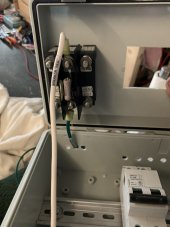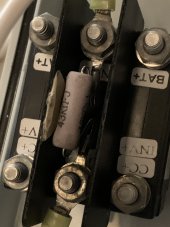DerpsyDoodler
Solar Addict
- Joined
- Jan 10, 2021
- Messages
- 2,247
I have a ground fault device i plan on installing between my solar system and my battery bank. The installation instruction diagram is in the below pic:

My DC negative bus bar (which is depicted as "terminal bus bar" in the diagram) is bonded to ground. if I were to install the gfdi breaker as depicted in the diagram, wouldnt that effectively create a ground loop between my DC negative bus and my ground bus? Is that by design? Should I not bond my DC negative bus bar to ground?

My DC negative bus bar (which is depicted as "terminal bus bar" in the diagram) is bonded to ground. if I were to install the gfdi breaker as depicted in the diagram, wouldnt that effectively create a ground loop between my DC negative bus and my ground bus? Is that by design? Should I not bond my DC negative bus bar to ground?





